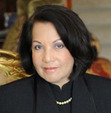Rachel Hajar's Blog: My Life in Doha - Posts Tagged "incense"
The Smell of Incense
A mabkhara is a container for burning incense and is commonly found in the Arab World. It was traditionally made from clay or soft stone, but incense burners are also made from porcelain, brass or silver.
The burning of incense is still very much a part of social life in the Arabian Gulf: weddings, festivals, and other public and social events.
The perfume exhaled from some spices and gums when burned is called incense in English and is the earliest perfume known to man. The most celebrated for its fragrance is frankincense, and in the ancient world, frankincense was more expensive than gold. The insatiable demand for it in Europe, particularly Greece and Rome, fueled the lucrative frankincense trade that in antiquity made Southern Arabia the richest place on earth. Greek and Latin authors wrote of an Arabia redolent with spices and aromatics, "all of Arabia exudes a most delicate fragrance; even the seamen passing by Arabia can smell the strong fragrance that gives health and vigor." The trade in frankincense flourished for centuries. The zenith of this aromatic heritage is long past, but traces can be found in Arabian souks where frankincense is still sold as expensive commodity.
Arabia’s aromatic past made scents a part of the fabric of everyday life in Arab culture. The burning of incense is not as widespread as it once was, but it is still a part of everyday life in the Arabian Gulf. Incense is also known as bukhor, which is made from a mixture of aromatic substances. The bouquet released when burning bukhor is floral with elusive undertones and overtones that could be spicy, woody, sweet, citrus, or fruity. The smell is pleasurable, delicious, and soothing. Fragrance is truly one of the small manifold pleasures of daily life.
In the early days of my life in Doha, when visiting Qatari friends, incense was passed around for guests to perfume themselves with the smoke. The sight of smoke swirling upwards from the incense burner and wafting its sweet fragrance had had a hypnotic effect on me. It always transported me to another time and place, sitting next to my mother in church during High Mass, watching a swinging censer spill out its smoky fragrance as priests and acolytes in their ceremonial robes walked past. Our sense of smell is a powerful memory trigger. I had always associated incense with religious service. I had been fascinated and enchanted to observe how intimately interwoven incense was in the fabric of daily life in the Arabian Gulf.
Like the dallah (Arabic coffee pot), the mabkhara (incense burner) has become a symbol of Arab hospitality in the Arabian Gulf since incense is burned in homes to welcome guests.
Rachel Hajar, M.D.
My Life in Doha: Between Dream and Reality
http://www.strategicpublishinggroup.c...
www.amazon.com
www.barnesandnoble.com.

The burning of incense is still very much a part of social life in the Arabian Gulf: weddings, festivals, and other public and social events.
The perfume exhaled from some spices and gums when burned is called incense in English and is the earliest perfume known to man. The most celebrated for its fragrance is frankincense, and in the ancient world, frankincense was more expensive than gold. The insatiable demand for it in Europe, particularly Greece and Rome, fueled the lucrative frankincense trade that in antiquity made Southern Arabia the richest place on earth. Greek and Latin authors wrote of an Arabia redolent with spices and aromatics, "all of Arabia exudes a most delicate fragrance; even the seamen passing by Arabia can smell the strong fragrance that gives health and vigor." The trade in frankincense flourished for centuries. The zenith of this aromatic heritage is long past, but traces can be found in Arabian souks where frankincense is still sold as expensive commodity.
Arabia’s aromatic past made scents a part of the fabric of everyday life in Arab culture. The burning of incense is not as widespread as it once was, but it is still a part of everyday life in the Arabian Gulf. Incense is also known as bukhor, which is made from a mixture of aromatic substances. The bouquet released when burning bukhor is floral with elusive undertones and overtones that could be spicy, woody, sweet, citrus, or fruity. The smell is pleasurable, delicious, and soothing. Fragrance is truly one of the small manifold pleasures of daily life.
In the early days of my life in Doha, when visiting Qatari friends, incense was passed around for guests to perfume themselves with the smoke. The sight of smoke swirling upwards from the incense burner and wafting its sweet fragrance had had a hypnotic effect on me. It always transported me to another time and place, sitting next to my mother in church during High Mass, watching a swinging censer spill out its smoky fragrance as priests and acolytes in their ceremonial robes walked past. Our sense of smell is a powerful memory trigger. I had always associated incense with religious service. I had been fascinated and enchanted to observe how intimately interwoven incense was in the fabric of daily life in the Arabian Gulf.
Like the dallah (Arabic coffee pot), the mabkhara (incense burner) has become a symbol of Arab hospitality in the Arabian Gulf since incense is burned in homes to welcome guests.
Rachel Hajar, M.D.
My Life in Doha: Between Dream and Reality
http://www.strategicpublishinggroup.c...
www.amazon.com
www.barnesandnoble.com.

Published on March 07, 2011 10:00
•
Tags:
arab, arab-hospitality, fragrance, hospitality, incense, perfume, scents



